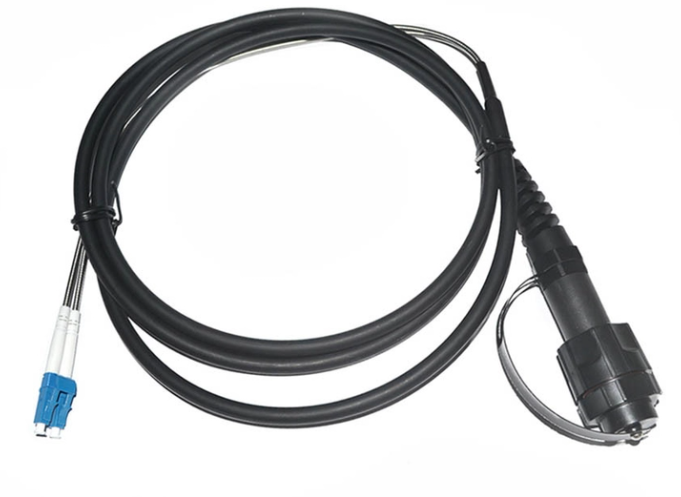The Role of FTTA Cable Assemblies in 5G and Wireless Infrastructure Evolution

Understanding FTTA Cable Assemblies
FTTA cable assemblies, also known as fiber to the antenna cable assemblies, are integral components in 5G and wireless infrastructure. They play a pivotal role in facilitating high-speed data transmission and connectivity, supporting the evolution of telecommunications. The integration of FTTA cable assemblies is essential for comprehending the future of telecommunications and its impact on connectivity and data transmission. These assemblies optimize the performance of 5G technology and wireless infrastructure, ensuring seamless connectivity and efficient data transfer.
Importance of FTTA Cable Assemblies: FTTA cable assemblies are crucial for enabling high-speed data transmission and connectivity in 5G networks, driving the evolution of telecommunications infrastructure.
The Impact of FTTA Cable Assemblies on 5G Technology
Enhanced Connectivity and Data Transmission
FTTA cable assemblies play a critical role in optimizing connectivity and data transmission within 5G networks. By supporting high-speed and reliable communication, these assemblies contribute to the seamless operation of 5G technology.
The integration of FTTA cable assemblies enhances the performance of 5G networks, ensuring that data is transmitted efficiently and without interruptions. This results in improved connectivity for users and businesses relying on high-speed wireless technology.
Scalability and Adaptability in 5G Networks
In the context of 5G technology, FTTA cable assemblies offer essential scalability and adaptability. They are designed to accommodate the increasing demand for high-speed data transmission and connectivity within evolving wireless infrastructure.
The flexibility of FTTA cable assemblies is a key factor in meeting the dynamic needs of 5G networks. This adaptability ensures that the infrastructure can scale effectively as demands for connectivity continue to evolve.
These advancements underscore the pivotal role played by FTTA cable assemblies in enabling the full potential of 5G technology, driving enhanced connectivity, and supporting future innovations in wireless infrastructure.
Advantages of Fiber Optic Cables in Wireless Infrastructure
High-Speed Data Transmission
Fiber optic cables, also referred to as optical fiber cables, are instrumental in enabling high-speed data transmission within wireless infrastructure. These cables effectively support the demands of 5G technology and beyond, ensuring that data is transmitted at rapid speeds to meet the needs of modern connectivity.
The utilization of fiber optic cables significantly enhances the efficiency of data transmission in wireless infrastructure. This results in the seamless and reliable transfer of large volumes of data, supporting the high-speed requirements of 5G networks and other advanced wireless technologies.
Reliability and Signal Integrity
One of the key advantages of fiber optic cables lies in their superior reliability and signal integrity. These cables minimize data loss and ensure consistent connectivity within wireless infrastructure, contributing to a stable and uninterrupted flow of information.
The use of fiber optic cables enhances the stability and integrity of data signals, thereby promoting the seamless operation of wireless infrastructure. This reliability is crucial for ensuring continuous connectivity and supporting the evolving demands of modern telecommunications.
FTTA Cable Assemblies in the Telecommunications Industry
Integration in Telecommunications Infrastructure
In the ever-evolving landscape of the telecommunications industry, FTTA cable assemblies play a pivotal role in integrating 5G technology and wireless connectivity. These assemblies are fundamental components that facilitate the seamless integration of high-speed data transmission and reliable connectivity within telecommunications infrastructure. By incorporating FTTA cable assemblies, the industry can meet the escalating demands for efficient and robust connectivity solutions. The performance and reliability enhancements brought about by these assemblies contribute significantly to the advancement of communication technology, ensuring that telecommunications infrastructure remains at the forefront of innovation.
Future Applications and Innovations
The versatility of FTTA cable assemblies positions them as drivers of future applications and innovations in the telecom sector. As advancements in 5G technology and wireless connectivity continue to unfold, FTTA cable assemblies are poised to support these developments by enabling innovative solutions that shape the future of connectivity and data transmission. Their adaptability and scalability open doors for groundbreaking applications, paving the way for transformative advancements that will redefine communication technology.
Future Prospects and Growth of FTTA Cable Assemblies
As we look ahead, FTTA cable assemblies are positioned to be instrumental in the continued advancement of 5G technology and wireless infrastructure. Their role in driving enhanced connectivity and data transmission is set to become increasingly significant, shaping the future of telecommunications. The ongoing evolution of FTTA cable assemblies presents promising prospects for the telecommunications industry, supporting the seamless integration of 5G technology and innovative connectivity solutions. Understanding the future prospects of FTTA cable assemblies is essential for envisioning the continued evolution of telecommunications and its impact on connectivity and data transmission.
See Also
Long-lasting and Trustworthy 2-in-1 Rugged Fiber Optic Cable Assemblies
Advantages of Utilizing OM4 MTP/MPO to LC 8-Core Fiber Breakout Cables
Trends in Optical Splitter Development: Review of FBT 1/2 Splitter with LC/UPC Connectors
Advantages of Pre-Assembled Invisible Fiber Optic Cables Fttd Fttr Pre-Terminated
Evolution of SFP Modules: Ethernet Technologies and Optical Fibers


